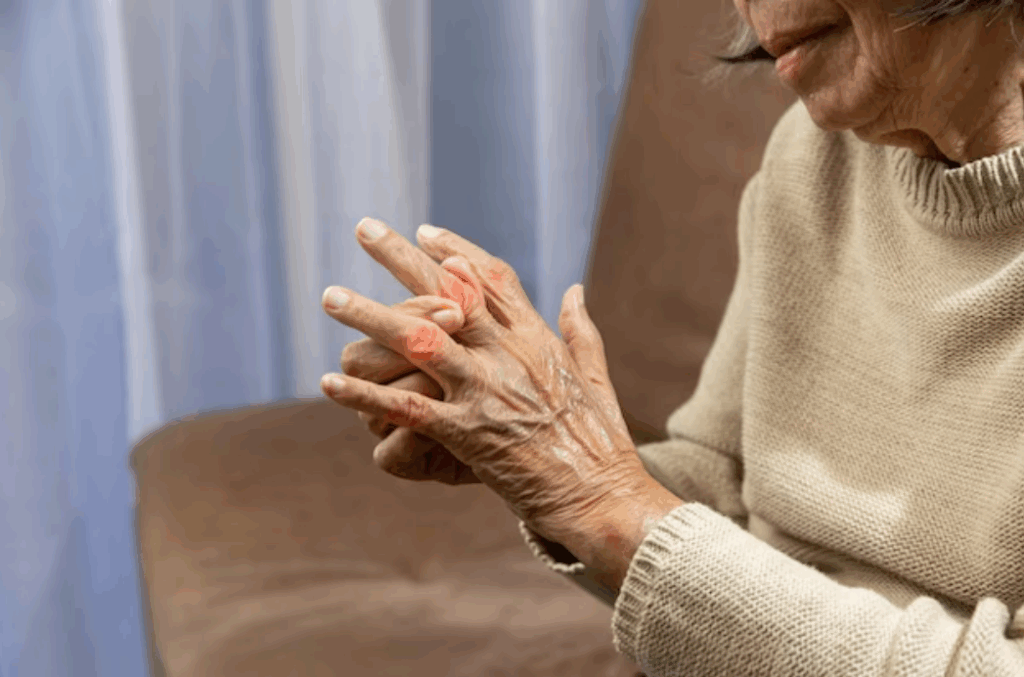If you're dealing with chronic pain, you might be looking for effective ways to manage it without relying solely on medication. There are several natural approaches that could help you find relief, from mindfulness techniques to dietary changes. By incorporating practices like regular exercise and aromatherapy into your routine, you may discover tools that enhance your overall well-being. Curious about how these strategies can work together to improve your quality of life? Let's explore some options that could make a difference.
Mindfulness and Meditation
Mindfulness and meditation offer a powerful pathway to managing chronic pain. These practices encourage you to focus your attention on the present moment, helping you develop a greater awareness of your body and its sensations. Instead of resisting or fearing your pain, you'll learn to observe it without judgment, which can reduce the emotional distress often tied to physical discomfort.
Incorporating mindfulness into your daily routine doesn't require extensive training or special equipment. You can start by setting aside just a few minutes each day to practice. Find a quiet space, sit comfortably, and close your eyes. Focus on your breath, noticing the rise and fall of your chest. When thoughts about pain arise, acknowledge them, but gently bring your focus back to your breath. This simple act can create a sense of distance from your pain, allowing you to respond to it with compassion rather than fear.
Meditation can also enhance the effectiveness of mindfulness. Guided meditations specifically designed for pain relief are widely available through apps and online resources. These meditations often include visualization techniques and soothing imagery, which can help you create a mental space free from discomfort.
As you practice mindfulness and meditation regularly, you may notice a shift in how you perceive pain. You'll likely find that your pain feels less overwhelming and more manageable.
Regular Exercise
Regular exercise plays an essential role in managing chronic pain and improving your overall well-being.
From gentle stretching to low-impact activities like swimming or walking, finding the right type of exercise for you can make a significant difference.
Staying consistent not only strengthens your body but also enhances the mind-body connection, helping you feel more in control of your pain.
Types of Beneficial Exercises
Many people find that incorporating various types of beneficial exercises into their routines can greatly alleviate chronic pain. One effective type is low-impact aerobic exercises, like walking or swimming. These activities get your heart rate up without putting too much strain on your joints.
You might also consider stretching exercises, which can enhance flexibility and reduce muscle tension. Yoga and Pilates are excellent choices for this, as they focus on gentle movements and breathing techniques.
Strength training can also be beneficial. By using light weights or resistance bands, you can build muscle and support your joints, which helps reduce pain over time. Focus on exercises that target the areas where you feel the most discomfort, but always listen to your body and avoid overexertion.
Don't overlook balance exercises either. Activities like tai chi or simple balance drills improve stability, which can prevent falls and injuries.
Finally, consider incorporating physical activities you enjoy, as this makes it easier to stick with your exercise routine. Whatever options you choose, aim to move your body regularly, as staying active is key to managing chronic pain effectively.
Importance of Consistency
Staying consistent with your exercise routine is essential for managing chronic pain effectively. When you commit to regular physical activity, you create a foundation for long-term relief. Inconsistent efforts won't yield the same benefits; your body needs time to adapt and strengthen.
By exercising consistently, you encourage your muscles and joints to become more resilient, which can help reduce pain levels over time. Establishing a routine helps you build endurance and flexibility, both of which are vital for pain management.
It's important to find activities you enjoy and can stick with. Whether it's walking, swimming, or yoga, consistency is key. Set realistic goals and gradually increase the intensity and duration of your workouts.
Don't forget to listen to your body. If you experience pain, it's okay to modify your exercises or take a break. Regular movement can still happen even on low-energy days.
Tracking your progress can also motivate you to stay on course. Celebrate small achievements, as they reinforce the habit.
Mind-Body Connection Benefits
The connection between your mind and body plays an essential role in managing chronic pain, especially when you engage in physical activity. By regularly exercising, you can harness this connection to improve your overall well-being and reduce pain levels.
Here's how it benefits you:
- Endorphin Release: Physical activity triggers the release of endorphins, your body's natural painkillers, helping to elevate your mood and decrease pain perception.
- Stress Reduction: Exercise helps lower stress hormones while promoting relaxation. This reduction in stress can lessen muscle tension and improve your pain management.
- Increased Flexibility and Strength: Regular movement enhances your muscle strength and flexibility, which can lead to better posture and alignment, ultimately reducing strain on your body.
- Improved Sleep Quality: Engaging in physical activity can help regulate your sleep patterns. Better sleep contributes to overall recovery and pain relief, making you more resilient against chronic pain.
Herbal Remedies
Exploring herbal remedies can offer a natural approach to managing chronic pain. Many people find relief through various plants and herbs, which can provide anti-inflammatory and analgesic properties.
One popular option is turmeric, known for its active compound, curcumin. This vibrant yellow spice has powerful anti-inflammatory effects that can help reduce pain and improve overall mobility.
Another effective herbal remedy is ginger. This root has been used for centuries to alleviate pain, particularly in conditions like arthritis. Ginger contains compounds that inhibit the production of inflammatory substances, making it a great addition to your pain management routine. You can enjoy it in teas, smoothies, or simply as a spice in your meals.
Willow bark is another traditional remedy. Often referred to as "nature's aspirin," it contains salicin, which converts into salicylic acid in your body, helping to reduce pain and inflammation. You can find willow bark in teas or capsules, but be sure to consult with a healthcare professional before trying it.
Additionally, consider using peppermint oil. When applied topically, it can create a cooling sensation that soothes sore muscles and headaches. Just remember to dilute it with a carrier oil to avoid skin irritation.
Always talk to your doctor before starting any herbal remedies, especially if you're taking medications or have existing health conditions.
With careful consideration, these natural options might help you find the relief you've been searching for.
Acupuncture
If you're seeking additional natural methods for chronic pain relief, acupuncture might be worth considering. This ancient Chinese practice involves inserting thin needles into specific points on your body to stimulate energy flow, known as "qi." Many people find acupuncture effective for reducing pain, improving mobility, and enhancing overall well-being.
Here are four key benefits of acupuncture you should know:
- Pain Reduction: Acupuncture triggers the release of endorphins, the body's natural painkillers. This can lead to significant relief from conditions like arthritis, migraines, and back pain.
- Reduced Inflammation: Studies show that acupuncture can decrease inflammatory markers in your body, helping alleviate pain associated with inflammation-related conditions.
- Improved Sleep: Chronic pain often disrupts sleep. Acupuncture can help by promoting relaxation and balancing your body's sleep-wake cycle, leading to better rest.
- Enhanced Mood: Living with chronic pain can take a toll on your mental health. Acupuncture has been shown to reduce anxiety and depression, providing a holistic approach to managing both physical and emotional pain.
Before starting acupuncture, it's a good idea to consult with a qualified practitioner who can tailor the treatment to your specific needs.
You might find that this natural method not only eases your pain but also improves your overall quality of life. Remember, everyone's experience is different, so be open to exploring how acupuncture can work for you.
Aromatherapy
Aromatherapy offers a natural way to manage chronic pain through the use of essential oils.
By inhaling these powerful scents, you can experience various benefits that may help alleviate discomfort.
Let's explore some effective inhalation techniques to maximize the relief you can achieve.
#
Essential Oils
Benefits
The soothing power of essential oils can transform your approach to chronic pain relief. By incorporating these natural remedies into your routine, you can experience a variety of benefits that may help alleviate your discomfort.
Here's how essential oils can support your journey:
- Anti-inflammatory Properties: Oils like ginger and turmeric can help reduce inflammation, targeting the root cause of your pain.
- Muscle Relaxation: Lavender and chamomile oils are known for their calming effects, which can ease muscle tension and promote relaxation.
- Enhanced Mood: Scents like peppermint and eucalyptus can uplift your spirits, helping you cope better with chronic pain through improved mental well-being.
- Improved Sleep Quality: Oils such as sandalwood and ylang-ylang can promote better sleep, allowing your body to heal and recover more effectively.
Using essential oils isn't just about the scent; it's about harnessing their therapeutic properties.
By experimenting with different oils and finding what works best for you, you can create a personalized approach to managing chronic pain that feels both natural and effective.
Embrace the benefits of aromatherapy and take a step towards relief today!
Inhalation Techniques
Inhaling essential oils can profoundly enhance your experience with chronic pain relief. When you breathe in these potent scents, you activate your olfactory system, which sends signals to your brain that can help manage pain and elevate your mood. This process is especially effective with oils like lavender, peppermint, and eucalyptus, known for their soothing and analgesic properties.
To practice inhalation techniques, you can use a diffuser, which disperses essential oils into the air, creating a calming environment. Alternatively, you can place a few drops of your chosen oil on a cotton ball or tissue and inhale deeply. This method is quick and portable, making it easy to use anywhere.
Make sure you're using high-quality, pure essential oils. You can also blend different oils to find a combination that works best for you. Experiment with various scents to discover what brings you the most relief.
Incorporating inhalation techniques into your daily routine can be a simple yet effective way to manage chronic pain naturally. Just take a moment to breathe deeply, and let the healing properties of essential oils work their magic.
Heat and Cold Therapy
Many people find that heat and cold therapy can be effective tools for managing chronic pain. When you apply heat, it helps to relax your muscles, increase blood flow, and ease stiffness. Conversely, cold therapy can numb sharp pain, reduce inflammation, and slow down nerve impulses, providing relief during flare-ups.
Both methods can be easily incorporated into your pain management routine.
Here are some effective ways to use heat and cold therapy:
- Heat Packs: You can use a hot water bottle or a microwaveable heat pack. Apply it to the painful area for 15-20 minutes. This works great for muscle tension and stiffness.
- Cold Compress: A cold pack or even a bag of frozen vegetables wrapped in a cloth can provide relief. Apply it to the affected area for 10-15 minutes to reduce swelling and numb pain.
- Warm Baths: Soaking in a warm bath can soothe multiple areas of discomfort. Adding Epsom salts can enhance the relaxation effect, making it a delightful way to unwind.
- Contrast Therapy: Alternating between heat and cold therapy can be beneficial. Start with heat for 10 minutes, then switch to cold for another 10 minutes. This method can enhance circulation and reduce pain effectively.
Massage Therapy
Massage therapy can be a powerful tool for managing chronic pain. By using various techniques, you can target specific areas of discomfort and promote relaxation.
Let's explore the benefits of massage and the methods that can help you find relief.
Benefits of Massage
Research shows that massage therapy can greatly alleviate chronic pain and enhance overall well-being. When you engage in regular massage sessions, you may experience significant improvements in both your physical and mental health.
Here are some key benefits you might notice:
- Reduced Muscle Tension: Massage works on your muscles, helping them relax and release built-up tension, leading to decreased pain and discomfort.
- Improved Circulation: The pressure applied during massage stimulates blood flow, which can help deliver oxygen and nutrients to your tissues, promoting healing and recovery.
- Enhanced Flexibility: Through targeted manipulation, massage can help improve your range of motion and flexibility, making daily activities easier and less painful.
- Stress Reduction: The soothing nature of massage not only relieves physical pain but also lowers stress levels. This can lead to improved mood and a greater sense of well-being.
Incorporating massage therapy into your pain management routine can be a powerful way to reclaim your life from chronic pain.
You deserve to feel comfortable and at ease in your own body.
Techniques for Pain Relief
When it comes to alleviating chronic pain, several effective techniques within massage therapy can make a significant difference.
One approach you might consider is Swedish massage, which uses long strokes and kneading to promote relaxation and improve circulation. This can help reduce muscle tension and enhance overall well-being.
Another effective technique is deep tissue massage. This method targets deeper layers of muscle and connective tissue, breaking down knots and relieving chronic pain.
If your pain is localized, trigger point therapy could be beneficial. It focuses on specific points in the muscles that are tight and painful, helping to release tension.
Sports massage is another option, especially if you're active. It's designed to prevent and treat injuries by improving flexibility and enhancing performance.
You might also explore aromatherapy massage, which combines the benefits of essential oils with traditional massage techniques to promote relaxation and pain relief.
Finally, consider incorporating self-massage techniques into your routine. Simple actions like rolling a tennis ball under your feet or using your hands to apply pressure on sore areas can provide immediate relief.
Dietary Changes
Your diet plays an essential role in managing chronic pain, as certain foods can either exacerbate or alleviate discomfort. By making mindful dietary changes, you can support your body's healing processes and potentially reduce pain levels. Here are some dietary adjustments you might consider:
- Increase Omega-3 Fatty Acids: Foods rich in omega-3s, like salmon, walnuts, and flaxseeds, have anti-inflammatory properties that can help reduce pain. Try incorporating these into your meals a few times a week.
- Limit Processed Foods: Processed foods often contain additives and unhealthy fats that can worsen inflammation. Focus on whole, unprocessed foods, such as fruits, vegetables, and whole grains, to promote better health.
- Stay Hydrated: Dehydration can lead to muscle cramps and joint pain. Make sure you're drinking enough water throughout the day. Aim for at least eight glasses, or more if you're physically active.
- Consider Anti-Inflammatory Spices: Spices like turmeric and ginger have powerful anti-inflammatory effects. Adding these to your cooking can't only enhance flavor but also help in alleviating pain.
Making these changes to your diet might feel challenging at first, but consistency is key.
Monitor how your body responds to different foods, and adjust accordingly. With time, you could find that the right diet considerably contributes to your pain management strategy.
## Essential Oils
Many people find relief from chronic pain through the use of essential oils, which offer a natural alternative to conventional treatments. These oils can reduce inflammation, relieve muscle tension, and promote relaxation, making them a valuable addition to your pain management routine.
To start, you might explore oils like lavender, eucalyptus, and peppermint. Lavender is known for its calming properties and can help reduce stress-related pain. Eucalyptus has anti-inflammatory benefits, making it great for sore muscles and joints. Peppermint oil provides a cooling sensation that can alleviate headaches and migraines.
Using essential oils is simple. You can diffuse them in your home, add them to a warm bath, or mix them with a carrier oil for topical application. When applying oils to your skin, always dilute them in a carrier oil, like coconut or jojoba oil, to prevent irritation. Start with a small amount to see how your body reacts.
Another effective method is to incorporate essential oils into a massage. This can enhance relaxation and improve circulation, further aiding in pain relief. You may also want to contemplate inhaling the scent directly from the bottle or using it in a roll-on applicator for convenience.
While essential oils can provide significant relief, it's important to remember that results can vary. Always consult with a healthcare professional before starting any new treatment, especially if you have underlying health conditions or are pregnant.
Sleep Improvement Strategies
Getting quality sleep is essential for managing chronic pain effectively. When you're well-rested, your body is better equipped to handle pain and recover.
Here are some sleep improvement strategies you can incorporate into your routine to enhance your sleep quality:
- Establish a Sleep Schedule: Go to bed and wake up at the same time every day, even on weekends. This helps regulate your body's internal clock and makes it easier to fall asleep and wake up.
- Create a Relaxing Bedtime Routine: Spend 30 minutes before bed engaging in calming activities like reading, meditating, or taking a warm bath. This signals your body that it's time to wind down.
- Optimize Your Sleep Environment: Make your bedroom as comfortable as possible. Keep the room dark, quiet, and cool. Consider using blackout curtains, earplugs, or a white noise machine to block out disturbances.
- Limit Stimulants and Screen Time: Avoid caffeine and nicotine in the hours leading up to bedtime. Also, limit your exposure to screens (phones, tablets, TVs) at least an hour before bed, as the blue light can interfere with your ability to fall asleep.
Conclusion
Incorporating these natural methods into your routine can greatly help relieve chronic pain. By practicing mindfulness, engaging in regular exercise, and exploring complementary therapies like acupuncture and massage, you can enhance your overall well-being. Don't forget to pay attention to your diet and sleep quality, as they play an essential role in pain management. Embracing these strategies not only empowers you to take control of your pain but also promotes a healthier, more fulfilling life.



